This is quite complicated to explain, so I will do my best, sorry if there is anything I missed out, let me know and I will rectify it.
My question is, I have been tasked to draw this shape,

(source: learnersdictionary.com)
This is to be done using C++ to write code that will calculate the points on this shape.
Important details.
User Input - Centre Point (X, Y), number of points to be shown, Font Size (influences radius)
Output - List of co-ordinates on the shape.
The overall aim once I have the points is to put them into a graph on Excel and it will hopefully draw it for me, at the user inputted size!
I know that the maximum Radius is 165mm and the minimum is 35mm. I have decided that my base Font Size shall be 20. I then did some thinking and came up with the equation.
Radius = (Chosen Font Size/20)*130. This is just an estimation, I realise it probably not right, but I thought it could work at least as a template.
I then decided that I should create two different circles, with two different centre points, then link them together to create the shape. I thought that the INSIDE line will have to have a larger Radius and a centre point further along the X-Axis (Y staying constant), as then it could cut into the outside line.
So I defined 2nd Centre point as (X+4, Y). (Again, just estimation, thought it doesn't really matter how far apart they are).
I then decided Radius 2 = (Chosen Font Size/20)*165 (max radius)
So, I have my 2 Radii, and two centre points.
Now to calculate the points on the circles, I am really struggling. I decided the best way to do it would be to create an increment (here is template)
for(int i=0; i<=n; i++) //where 'n' is users chosen number of points
{
//Equation for X point
//Equation for Y Point
cout<<"("<<X<<","<<Y<<")"<<endl;
}
Now, for the life of me, I cannot figure out an equation to calculate the points. I have found equations that involve angles, but as I do not have any, I'm struggling.
I am, in essence, trying to calculate Point 'P' here, except all the way round the circle. 
(source: tutorvista.com)
Another point I am thinking may be a problem is imposing limits on the values calculated to only display the values that are on the shape.? Not sure how to chose limits exactly other than to make the outside line a full Half Circle so I have a maximum radius?
So. Does anyone have any hints/tips/links they can share with me on how to proceed exactly?
Thanks again, any problems with the question, sorry will do my best to rectify if you let me know.
Cheers
UPDATE;
R1 = (Font/20)*130;
R2 = (Font/20)*165;
for(X1=0; X1<=n; X1++)
{
Y1 = ((2*Y)+(pow(((4*((pow((X1-X), 2)))+(pow(R1, 2)))), 0.5)))/2;
Y2 = ((2*Y)-(pow(((4*((pow((X1-X), 2)))+(pow(R1, 2)))), 0.5)))/2;
cout<<"("<<X1<<","<<Y1<<")";
cout<<"("<<X1<<","<<Y2<<")";
}
Opinion?